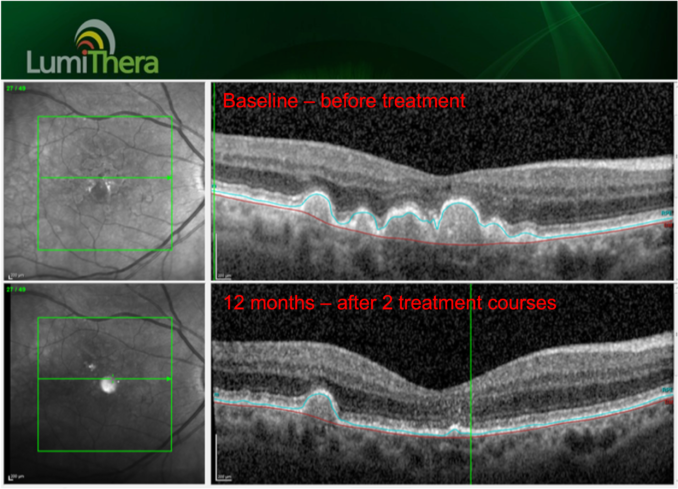


In macular degeneration the ageing process of the retina cells causes a loss of function and eventually cell death. It uses Photobiomodulation, to apply specific wavelengths to the eye to improve energy production within the cells. The multiwavelength approach works on various cellular mechanisms to improve macular function.
Each of the 3 wavelengths have specific purposes in the treatment of Macular degeneration.

More on the science from Lumithera:
The mechanism of photobiomodulation (PBM) at the cellular level has been ascribed to the activation of mitochondrial respiratory chain components resulting in stabilization of metabolic function and initiation of a signalling cascade, which promotes cellular proliferation and cytoprotection.
PBM works through the absorption of photons by photoacceptors in the targeted tissue. Once absorbed, secondary cellular effects include increases in energy production and changes in signalling modalities such as reactive oxygen species, nitric oxide and cellular calcium. Cellular changes occur through activation of transcription factors leading to modulation in protein synthesis, proliferation and ultimately improved cell survival.
PBM is currently used in physiotherapy, arthritis, wound repair and sports medicine and is increasingly being recognised as a therapy for the treatment of serious, life-threatening disease states.
Mitochondria produce energy to sustain normal cellular function
Cytochrome C oxidase (CCO), a critical protein involved in regulation of mitochondrial activity, has been shown to be a key photoacceptor of light in the far red to near-infrared (NIR) spectral range. Oxidative stress and impaired mitochondrial function